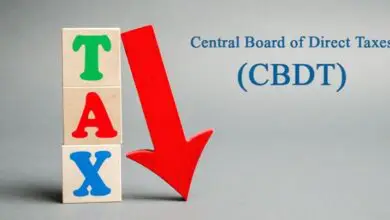Financial Advice for Retirement Planning – Things to Keep in Mind

Why is retirement planning important and too critical for everybody? Just look at ONE statistic only. Every day, over the next 20 years, 10,000 Americans will reach the golden age of 60. Now, that’s definitely food for thought. Think of the effect it will have if all these people retire without an adequate financial cushion to take care of their basic needs.
So how do you go about it? The only answer is to have a retirement strategy in place well before you walk into the sunset.
Retirement planning is the process of zeroing in on your retirement goals and the actions at your disposal to turn the goals into reality. Your retired life should be comfortable and financially secure, and you have to build a savings buffer to finance it. Hence, it makes sense to pay serious attention quite early in life to get there and act accordingly.
This post will take you through the nitty-gritty of retirement goals and the type of retirement accounts that are ideal to finance the future. The crucial part is the taxes, and you should take efforts to minimize the tax hit after retirement. Even though you might have received major tax concessions on contributions to retirement accounts, the moment withdrawals start, the funds become taxable. So you have to know how to minimize the taxes after retirement while continuing to save for the future.
Here are the steps you should take to design a rock-solid retirement plan regardless of the starting age.
Set a Financial Goal
This is your launchpad and what you want to achieve depends on the amount you save to lead the kind of lifestyle you desire. Other factors are the age you want to retire and what you want to do during your retirement days.
As advised by most financial advisors, the rule of thumb for your savings target is 25 times the current annual expenses. For example, if you earn $40,000 per year, the value will be $10,00,000. This is assuming that you spend now within your earnings and do not get into debt.
But here again, the expenses pattern after retirement will not be the same. You will save substantially on commuting to work expenses and should have paid off the mortgage. But new expenses will crop up. Medical expenses might go through the roof, and you will, in all probability, require house help and others for small activities like maintaining your garden, which you used to do before. Moreover, since you do not have to go to work, you might want to travel, go sightseeing, plan holidays, and indulge in other expensive activities.
The average then is to aim for a savings of 80% of your annual earnings now. For $100,000 per year earnings, save $80,000 every year for the next 20 years, assuming that you retire at 60 and live till 80.
Set a Time Frame
 The time frame to meet your goals for retirement savings will be based on your present age and the age of retirement. If you plan to build an investment portfolio, it can withstand greater risks when this time difference is more. By starting early on retirement planning, you have the freedom to invest in comparatively high-risk stocks that bring in more returns. Over the long term, stocks have always outperformed other investment avenues, such as bonds and mutual funds.
The time frame to meet your goals for retirement savings will be based on your present age and the age of retirement. If you plan to build an investment portfolio, it can withstand greater risks when this time difference is more. By starting early on retirement planning, you have the freedom to invest in comparatively high-risk stocks that bring in more returns. Over the long term, stocks have always outperformed other investment avenues, such as bonds and mutual funds.
Getting high returns on your investment is very important as it is a hedge against inflation and helps maintain your purchasing power. It is critical as a minimal inflation rate of even 2 to 3 percent each year can eat into the value of your savings by 50 percent over 25 years. It has to be ensured that the rate of return (ROI) on your investments stays ahead of the inflation rate at the bare minimum. In a nutshell, the older you are, the more you should be inclined to invest in securities that give you less return than stocks but will preserve your capital and generate income.
While planning for retirement income, break up your strategy into multiple sections. After retirement, you might have few expense compulsions – college admission, relocation, or something similar. The investment plan should be broken down accordingly with savings goals that meet the requirements of each component. Keep rebalancing your investment portfolio as your prospective financial needs change over time.
Check After-Tax Returns on Investment
You might have set your financial goals and the time-frame to achieve them but what is important is calculating the after-tax rate of returns on investment to get the real value of retirement savings. Targeting a rate of return on investment at an average of 10 percent is not realistic, even if you are thinking long-term. This is because, with passing years, the returns will correspondingly reduce as you gradually move from high-return stocks to low-yield bonds that ensure greater stability and security but low returns.
Investment returns are taxed, and the rate depends on the type of retirement account held. Therefore, always calculate the return rate on an after-tax basis and take this amount only in your financial planning. Another aspect is taxes are payable once you have the rights reserved to start withdrawing from your retirement income.
The simple dictum of growth in savings is the need to earn more and spend less while investing wisely. Evaluate your financial planner regularly to make sure that you are progressing towards your long-term financial goals. Apart from the traditional investment routes, the following will ensure a trouble-free retired life.
401 (K)
A popular benefit provided by employers is that this retirement plan can direct an untaxed amount of your remuneration to an investment account. You can select the specific investment where you need this amount to be deposited for post-retirement withdrawals. Like 401k, there is another plan 401a. You should understand what is the basic difference between 401a vs 401k retirement plan.
IRA
Like the 401 (K), you have total control over your investment. However, this scheme is not available to all.
Life Insurance
It is the only financial product that offers long-term returns and the relief of life being insured. If you need risk-free returns, choose an endowment plan that pays a lump sum upon maturity and is ideal for meeting a particular expense after retirement. Or you can opt for unit-linked life insurance where returns are in tune with the market trends.
As any financial advisor will tell you, if your present employer closes shop or a past employer goes bust, you are still entitled to a pension. Under no circumstances should you exclude this from your retirement plan.
Focus on Estate Planning
Planning for retirement is not an individual need, but a comprehensive plan will also account for the loved ones you leave behind following your death. You should ensure that they stay financially stable and do not face any hardships. It is here that life insurance has an important role to play and should form an integral part of the retirement plan. A well-crafted plan apart from meeting the needs of the family helps to avoid an elaborate probate process.
Check with your financial advisor and get advice on tax planning as it is an essential part of estate planning for retirement. Suppose you want to leave assets to your family members or charity. In that case, you need to evaluate the relative advantages (or disadvantages) of either gifting or including them in the estate process.
As you approach retirement age, your financial planner should have an investment approach that gives returns adequate to meet the need for annual inflation-adjusted living expenses. This guarantees the value of your portfolio on retirement, which is then transferred to your beneficiaries. Seek advice on financial planning to decide the ideal plan for you.
Summing up, the bottom line for retirement savings falls entirely on your shoulders. This is why it is necessary to take the help and advice of specialized retirement professionals who can guide you to your goals. In the private sector, employees can hardly count on benefits like pensions provided by the employer. Even in 401(K), the choice of investments to get the best returns lies entirely on you.
This is where you should carefully toe the line as designing a comprehensive retirement plan can be quite a challenge. You have to appraise your specific after retirement needs and the desired standard of living and strike a balance between that and the practical returns on investments. The best solution is to have a flexible portfolio and be continuously updated to move in tune with changing market conditions and shifting post-retirement needs.

How do I create a financial retirement plan?
Planning for retirement is essential if you want to live comfortably and maintain your current lifestyle. The earlier you start the process, the more leeway you invest in high-risk shares and securities to get excellent returns.
The process starts with fixing a financial goal for income generation and the time frame you have to achieve. The rule of thumb is to keep a target of 25 times your current annual income equally spread out over the years between now and retirement. If you retire at 60, you will at least have enough to live comfortably for 25 years.
While calculating your saved returns on investment, it is advisable to consider the taxes paid into the account. Even if your savings are tax-free, the moment you dig into it after retirement as per your need, it becomes taxable. Hence, keep a provision for this too.



